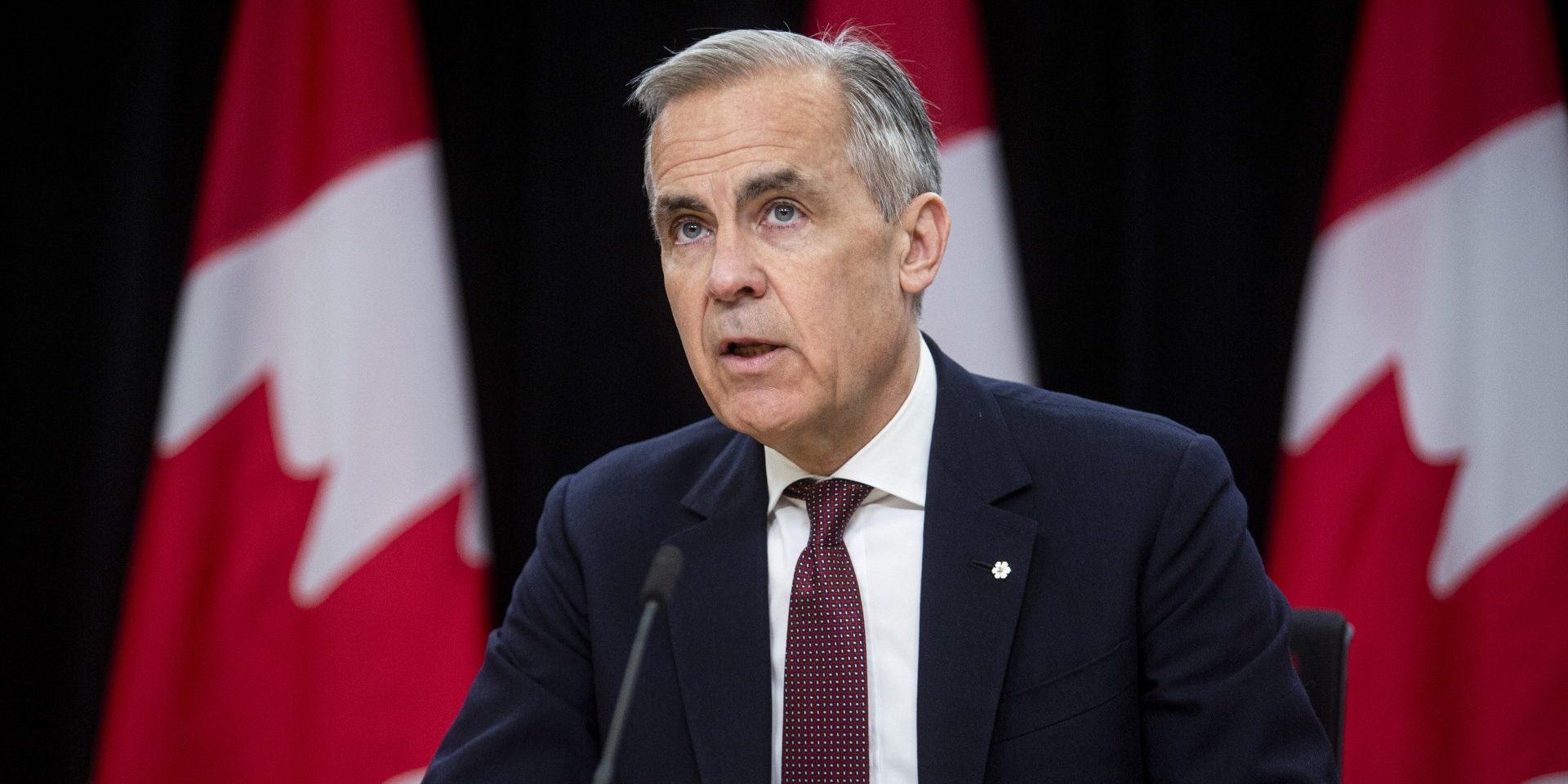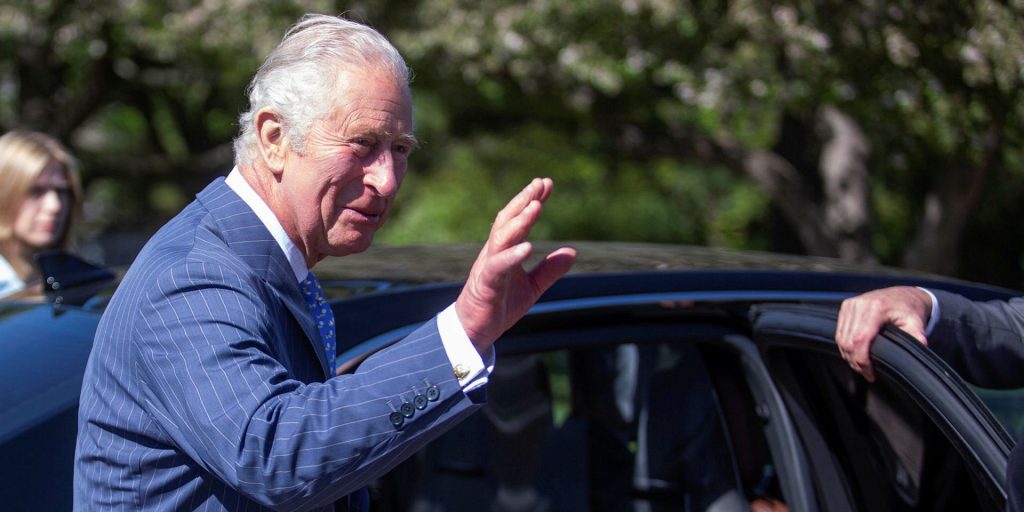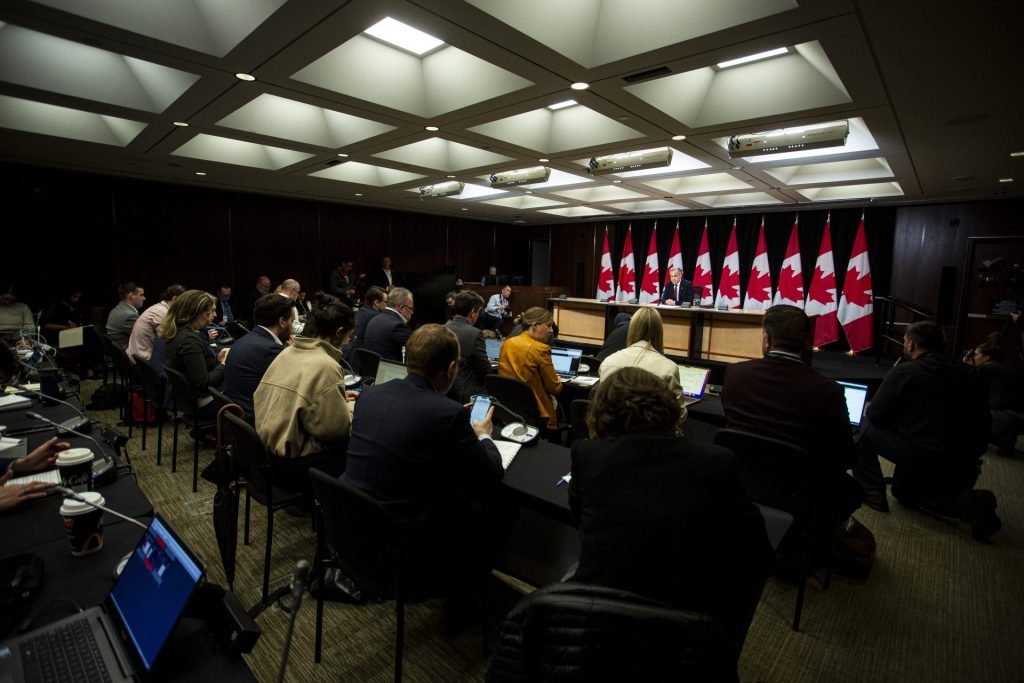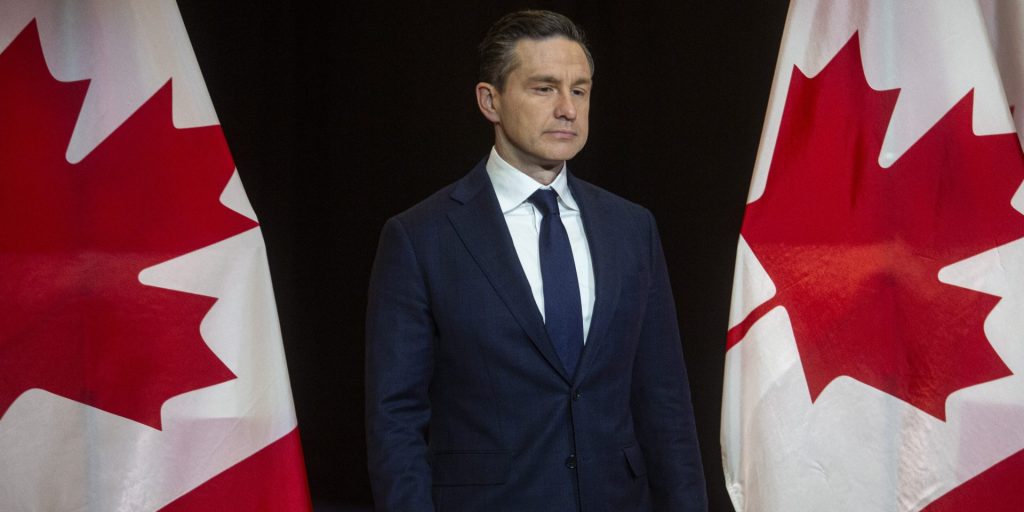‘Difficult, but constructive talks’ ahead: Carney announces plans for White House trip in first post-election press conference

In his first post-election press conference, Prime Minister Mark Carney set the stage for his government’s priorities in the coming weeks, saying he is focused on building Canada’s economy and that he will be headed to the White House next week to meet United States President Donald Trump to “fight to get the best deal for Canada,” taking “all the time necessary” to secure it.
Speaking to Parliamentary Press Gallery reporters for the first time since the election, Carney emphasized the importance of building the country’s economy in the face of threats from the America. He confirmed plans to travel to Washington, D.C., on May 6 to meet the president in person, where Carney said he expects “difficult, but constructive talks.”
Carney praised Trump, whom he called “one of the best negotiators,” saying that good negotiators “respect strength” and “that’s why we’re building Canada strong.”
On their April 29 phone call, Carney said Trump made no reference to Canada as an American state.
Although this was Carney’s first national media appearance, it was not his first post-election interaction with the press—the prime minister granted an exclusive interview with the U.K.’s public broadcaster, the BBC, on April 28, where he spoke on Canada-U.S. relations, and reacted to Trump’s repeated “51st state” comments.
In Ottawa on May 2, Carney confirmed media reports that King Charles III and Queen Camilla would be in the capital for a two-day trip timed to open Parliament’s new session. Parliament will resume on May 26, with the King delivering the throne speech on May 27.

Carney was clear that he made the request of the King, and said the monarch’s presence “is a very clear message” to the world that “Canada is a sovereign country.”
“This is a historic honour which matches the weight of our times,” said Carney, speaking to reporters from in the National Press Theatre in a rare appearance given that his predecessor Justin Trudeau opted for the West Block as his preference site for press conferences.
Carney also revealed plans to name a new cabinet on the week of May 12, but stopped short of revealing any moves or new ministers. When asked by a National Post reporter if current Finance Minister François-Philippe Champagne (Saint-Maurice—Champlain, Que.) would be staying on in the high-profile post, Carney responded, jokingly: “Did he ask you to ask that?”
“I committed to an efficient cabinet, a focused cabinet, [and] cabinet with … gender parity,” said Carney, whose first cabinet comprised 23 MPs, down significantly from his predecessor Justin Trudeau’s 37-member team. “Those final decisions haven’t been made.”

But the primary focus of the conference was addressing plans to navigate Canada’s current “crisis” brought on by the ongoing trade war with the U.S. He repeated campaign promises to develop Canada’s economy by doubling the rate of housing development with the help of a proposed federal entity—Build Canada Homes—while promising to attract “the best talent in the world to build our economy.” He also promised to cap the percentage of temporary workers and international students to fewer than five per cent of Canada’s total population by the end of 2027, a measure Carney said will “ease strains” on housing, services, and infrastructure.
Canada-U.S. relations was a defining ballot-box question for voters this election—and a factor that contributed to Carney’s win. Early in his campaign, the prime minister positioned himself as the front-man to stand up to Trump, focusing his campaign on pitches to boost the Canadian economy in the face of American tariffs by seeking out new trading relationships, increasing development, and reducing Canada’s reliance on the U.S., relying on his record as an economist.
This propelled the Liberals—who, prior to Trudeau’s resignation, were facing deep unpopularity after almost a decade in power and significantly trailing behind the Conservatives in the polls—to a historic fourth term under the not-previously-elected Carney.
Election night gave the Liberals a 168 seat minority—pending official recounts—which is just four seats shy of the 172 seats needed to form a majority government. The Liberals were initially projected to win 169 seats, but a contested seat in the Quebec riding of Terrebonne flipped in favour of the Bloc Québécois’ incumbent, bringing that party’s total to 23. The Liberals can also turn to the seven-member NDP caucus, or the lone Green MP to cobble together support for legislation.
The Conservatives left the election with 144 seats, increasing their seat count by 23, while suffering a high-profile loss for Leader Pierre Poilievre in the riding of Carleton, Ont. Instead, Liberal candidate Bruce Fanjoy snagged an upset win with 50.8 per cent of the vote, well ahead of Poilievre, who had held the seat since winning in 2004 at age 25.

An hour after the press conference ended, the Conservative Party announced one of its re-elected MPs, Damien Kurek (Battle River-Crowfoot, Alta.), would be stepping down to make way for Poilievre to get a seat in the House of Commons in a coming byelection. Poilievre will be running in one of the safest seats in the country where Kurek took 81.8 per cent of the vote, more than 70 percentage points ahead of the next candidate.
Carney, who, as prime minister, has some control over when a byelection is called after a seat is vacated (between 11 and 180 days), said he would call one “as soon as possible” if that’s the route the Conservatives’ choose.
“No games, nothing,” he told reporters.
A minority government means that Carney’s government will be reliant on support from other parties to pass legislation, something both the NDP and the Bloc Québécois have expressed their willingness to support. In the press conference, Carney referenced “constructive” conversations with both the Bloc and Conservative leaders.
Bloc Québécois Leader Yves-François Blanchet (Beloeil-Chambly, Que.) told reporters on April 29 that parties need to set aside their differences and work collaboratively to effectively address the U.S., calling for a “partisan truce.”
In the previous Parliament, the NDP propped up the Liberals through a supply-and-confidence agreement, which ended in September 2024. When Carney was asked if his government would pursue a similar pact with the NDP’s seven-member caucus, the prime minister was clear.
“No. Short answer, no.”
Carney followed up his reply by emphasizing that despite forming a minority government, his party secured the largest number of votes “in history,” conceding that “obviously, by definition, in Parliament, we will need to get majority support to pass legislation.”
But he stopped short of committing to a coalition or entering agreements with other parties to secure votes, instead pointing to Canada’s current upheaval.
“We will be putting forth legislation that’s consistent with our platform and consistent with the requirements of the time,” said Carney, who highlighted the gravity of the moment. “It’s not just words. We are in a crisis.”
ewand@hilltimes.com
The Hill Times






 LICENSING
LICENSING PODCAST
PODCAST ALERTS
ALERTS













